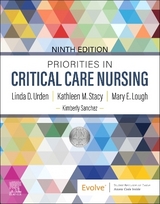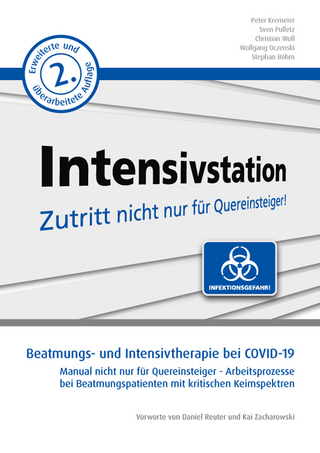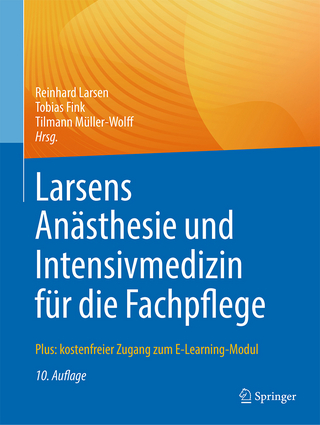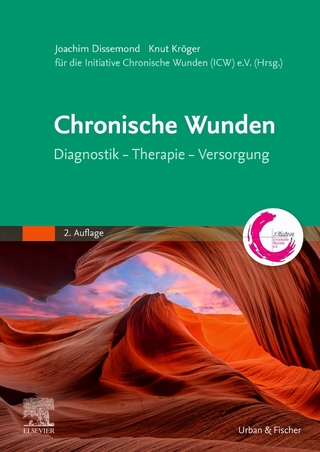
Priorities in Critical Care Nursing
Mosby (Verlag)
978-0-323-67660-1 (ISBN)
- Titel erscheint in neuer Auflage
- Artikel merken
Praised for its comprehensive coverage and clear organization,?this market-leading text offers a great foundation in the realities and challenges of today's critical care unit that's perfect for both nursing students and practicing nurses alike.
This new edition also features enhanced integration of QSEN and interprofessional collaborative practice, plus expanded coverage of leadership, post-ICU outcomes and highly contagious infections. Revamped case studies, Patient Teaching boxes, Evidence-Based Practice boxes, Patient Safety Alerts, and other learning tools further develop your critical thinking skills and prepare you for success in high-acuity, progressive, and critical care settings.
UNIQUE!
- Nursing management plans of care feature approximately 35 NANDA-I nursing diagnoses to provide a detailed, ready-to-use, clinically current reference for safe, effective patient care.
- Consistent organization within each body-system unit provides a systematic framework for learning and for CCRN and PCCN certification preparation. It also serves as a great reference for clinical practice.
- Pharmacologic Management tables offer quick summaries of the drugs most often used in critical care.
- NEW! Enhanced QSEN integration makes it easier to link text content to the various QSEN competencies through the addition of QSEN-related questions in case studies, retitled features and boxes, QSEN content icons, and highlighted QSEN information throughout.
- UNIQUE! Integration of interprofessional collaborative practice incorporates the various IPEC competencies - such as Values & Ethics for Interprofessional Practice, Roles & Responsibilities, Interprofessional Communication, and Teams & Teamwork - into the text content and case studies.
- NEW! Enhanced focus on core content directs readers' attention to routine adult critical care situations and minimizes the attention given to issues treated by specialized facilities.
- NEW! Revamped case studies feature updated scenarios and information to reflect the current "flavor" of high-acuity, progressive, and critical care settings - with patients being seen in a variety of settings. These scenarios help readers "scaffold" learning and apply chapter content to true-to-life clinical situations.
- NEW! Content on post-ICU outcomes has been added to chapters on therapeutic management and disorders to provide readers with a more holistic perspective on the critical care patient experience.
- NEW! Expanded leadership content places a fresh focus on the emerging importance of nursing leadership to ensure optimal patient outcomes.
- NEW! Added content on highly contagious infections has been incorporated into the chapter on sepsis to keep readers abreast of this ever-changing area of interest.
- NEW! Links to 15 sample skills from Elsevier Clinical Skills give readers a foundation in mastering critical care skills.
- NEW! Enhanced Patient Teaching boxes feature more specific and practical content for at-the-bedside patient care.
- NEW! Additional animations have been added to the Evolve companion website.
- NEW! Updated content throughout reflects changes in nursing, medical, and collaborative care of patients in high-acuity, progressive, and critical care settings.
Unit 1: Foundations of Critical Care Nursing
1. Critical Care Nursing Practice
2. Ethical Issues
3. Legal Issues
4. Genetic Issues
5. Patient and Family Education
6. Psychosocial Alterations and Management
7. Nutrition Alterations and Management
8. Pain and Pain Management
9. Sedation, Agitation, and Delirium Management
10. End-of-Life Care
Unit 2: Cardiovascular Alterations
11. Cardiovascular Anatomy and Physiology
12. Cardiovascular Clinical Assessment
13. Cardiovascular Diagnostic Procedures
14. Cardiovascular Disorders
15. Cardiovascular Therapeutic Management
Unit 3: Pulmonary Alterations
16. Pulmonary Anatomy and Physiology
17. Pulmonary Clinical Assessment
18. Pulmonary Diagnostic Procedures
19. Pulmonary Disorders
20. Pulmonary Therapeutic Management
Unit 4: Neurologic Alterations
21. Neurologic Anatomy and Physiology
22. Neurologic Clinical Assessment and Diagnostic Procedures
23. Neurologic Disorders and Therapeutic Management
Unit 5: Kidney Alterations
24. Kidney Anatomy and Physiology
25. Kidney Clinical Assessment and Diagnostic Procedures
26. Kidney Disorders and Therapeutic Management
Unit 6: Gastrointestinal Alterations
27. Gastrointestinal Anatomy and Physiology
28. Gastrointestinal Clinical Assessment and Diagnostic Procedures
29. Gastrointestinal Disorders and Therapeutic Management
Unit 7: Endocrine Alterations
30. Endocrine Anatomy and Physiology
31. Endocrine Clinical Assessment and Diagnostic Procedures
32. Endocrine Disorders and Therapeutic Management
Unit 8: Multisystem Alterations
33. Trauma
34. Shock, Sepsis, and Multiple Organ Dysfunction Syndrome
35. Burns
36. Organ Donation and Transplantation
37. Hematologic and Oncologic Emergencies
Unit 9: Special Populations
38. The Obstetric Patient
39. The Pediatric Patient
40. The Older Adult Patient
41. The Perianesthesia Patient
Appendix A. Nursing Management Plans
Appendix B. Physiologic Formulas for Critical Care
| Erscheinungsdatum | 18.03.2019 |
|---|---|
| Verlagsort | St Louis |
| Sprache | englisch |
| Gewicht | 1200 g |
| Einbandart | kartoniert |
| Themenwelt | Pflege ► Fachpflege ► Anästhesie / Intensivmedizin |
| ISBN-10 | 0-323-67660-X / 032367660X |
| ISBN-13 | 978-0-323-67660-1 / 9780323676601 |
| Zustand | Neuware |
| Haben Sie eine Frage zum Produkt? |
aus dem Bereich



